Magnepan MG.7 Loudspeaker
REVIEW by Julie Mullins Feb 25, 2015

Let’s face it: Most audiophiles are into cone loudspeakers. And why not? They’re plentiful, good-sounding, and (at least in many cases) quite affordable. Though force of habit is a powerful thing, what if there were an alternative that was every bit as good-sounding (maybe even better-sounding) and just as affordable, only it didn’t have cones and didn’t come in a box? Although I imagine most of you have already made their acquaintance in previous versions, let me introduce you to Magnepan’s latest “mini” planar dipole, the two-way, floorstanding, all-quasi-ribbon-driver MG .7—a speaker that is capable of a more natural and full-range sound than any previous “mini” Maggie, and a more natural and full-range sound than anyone might reasonably expect for the money.
The .7s Versus Your Room
Let me say right off the bat that these are very impressive speakers offering a practically unbeatable quality-to-cost ratio. Of course, they do have certain peculiarities. For one thing, with Magnepans proper setup in your room is arguably more critical than it is with most other types of speakers. It certainly took some experimentation with positioning to get the .7s to sound their best (though the result was worth every minute of effort). Happily, these guys aren’t too heavy, only 27 pounds each, so they can easily be shifted around to suit your room’s needs—even by a gal!
Though small by Maggie standards, the .7s are still four-and-a-half-foot-tall, one-foot-four-inch-wide rectangular panels about the height of a largish dynamic floorstander, a little wider than same, and, at under an inch in depth, about twenty times thinner. Their figure-8 dipolar dispersion (see below) makes sidewall reflections less of an issue with the .7s than it is with wide-dispersion cones; however, if the .7s (or any Maggies) are toed-in toward the listener rather than made parallel to the backwall, then part of their rear wave will bounce off sidewalls, potentially adding (as it does with any loudspeaker) brightness from early-arrival reflections. What this means is that with Maggies you should take some of the same care in placement vis-à-vis sidewalls as you would with any loudspeaker, especially if you toe the speakers in.
The Maggies should also be placed a reasonable distance from back walls, in order to avoid doubling and/or cancellation in the bass from the dipolar .7s’ out-of-phase rearwave. (In the end I set them up about three-and-a-half feet from the rear walls.)
Unlike most dynamic loudspeakers, the Maggies can be positioned with their tweeters in different locations—to the inside of the speaker, firing more or less directly at you, or on the outside of the speaker, firing less directly at you. All you need to do to change the tweeter orientation is swap the left speaker for the right one. Obviously the location of the tweeter makes a difference in tonal balance, imaging, and soundstaging. Though JV and I preferred the sound of the .7s with their tweeter to the outside in the room in which we were listening, the inside position did have more presence, image focus, and treble energy. Obviously any decision about tweeter orientation will depend on the size of your room and how far you’re seated from the panels.
Once again like all Maggies, the quasi-ribbon panels of the .7s need some break-in before they sound their best. Though quite listenable out of the box, they will sound better (less bright in the upper mids, more filled-out, freed-up, and energetic in the bass) with several weeks of play.
The .7 Versus The MMG
At 15-1/4 inches wide and 54-1/4 inches tall, the .7s are about an inch wider and better than six inches taller than Maggie’s other much-less-expensive two-way “mini,” the MMG. However, unlike the MMG, both the tweeter and the midrange/bass panels of the .7s are quasi-ribbons (as opposed to quasi-ribbon and planar-magnetic, for which see JV’s sidebar), giving the new Maggie an audible leg up in speed, resolution, bandwidth, and overall coherence over their little brothers. Not only are the .7s more extended in the treble than the MMGs; thanks to their considerably larger mid/bass panels they are also more extended in the low end, which Jon and I judged to go down more or less linearly into the low 50s. Perhaps the best news is that they will only set you back mere pocket-change (for high-end gear): $1395 the pair.
The .7s Versus Cones
As you probably already know, planar speakers use a different kind of technology than cone or horn loudspeakers. The most obvious visible difference is that there’s no box to “house” the drivers or to damp their backwave—and thus no “box coloration.” Planars produce equal amounts of sound front and back, and, at least in theory, use the room (or the distance between their panels and the walls) to “damp” or attenuate their rear wave.
What you can’t see in a planar speaker is the drivers themselves, which are also very different than cones. The .7s use ultra-low-mass strips of aluminum bonded to very thin sheets of Mylar as drivers. Suspended between permanent bar magnets, these featherweight “quasi-ribbons” are faster and lower in distortion than much-more-massive cones. (Once again, see Jon’s sidebar for an explanation of how quasi-ribbons work.)
It may be obvious, but a driver’s mass and a speaker’s box inevitably and profoundly affect what you hear. Magneplanars offer the advantages of an extremely low-mass/low-inertia/large-surface-area driver suspended in a more open, unrestricted, less resonant and resonance-prone framework than that of a dynamic loudspeaker’s massive enclosure. All of this results in a boxless “airiness” to the sound and a naturalness of timbre that allow acoustic instruments to shine.
The .7s Versus Music
In my listening tests, I spun a wide range of LPs and some digital tracks, too. At the risk of sounding cliché, my musical tastes really run the gamut. (If you saw my record collection, you might even wonder whether I had multiple personalities!) Anyway, I’d like to share some listening examples and how the Maggie .7s fared with each.
I knew going in that no speaker is going to be perfect on every kind of music, and that perhaps the most important consideration for a potential buyer is how well his listening preferences match up with a speaker’s characteristics: with what the speaker does well, and what it doesn’t do as well. Magneplanars are famous for their accurate reproduction of the midrange, so I expected them to deliver impressively realistic sound with almost all acoustic instruments (save perhaps for big bands and very large orchestras). And deliver they did!
On digital tracks from Temptation, Holly Cole’s well-known covers of Tom Waits tunes, the “airiness” of the sound of the Maggies was a match made in heaven with Cole’s breathy vocals. “(Looking for) The Heart of a Saturday Night” was a real standout in its faithful sonic reproduction of the entire Holly Cole Trio’s stellar performance. Translation: The recording sounded beautiful and true-to-life. Also, I could swear that the presentation, while open and graced with a striking measure of air and light, felt like it existed within some precisely (almost mathematically) defined soundfield. Quite a large field, but still a space with a specific form and shape that was different than the form and shape of the listening room. I suppose what I’m talking about is a “soundstage,” the .7s’ recreation of which was kind of stunning. When you add this remarkable reproduction of ambient space to the .7s’ natural timbre, they are clearly an excellent choice for acoustic music recorded live or in an actual hall.
ยอมรับกันเถอะว่านักเล่นเครื่องเสียงส่วนใหญ่ชอบลำโพงแบบกรวย แล้วทำไมจะไม่ล่ะ? ลำโพงแบบกรวยมีให้เลือกมากมาย ให้เสียงดี และ (อย่างน้อยก็ในหลายกรณี) ราคาค่อนข้างย่อมเยา แม้ว่านิสัยจะเป็นสิ่งที่ทรงพลัง แต่จะเป็นอย่างไรหากมีทางเลือกอื่นที่ให้เสียงดีพอๆ กัน (บางทีอาจดีกว่าด้วยซ้ำ) และมีราคาพอๆ กัน แต่ไม่มีกรวยและไม่ได้บรรจุในกล่อง แม้ว่าฉันจะจินตนาการว่าพวกคุณส่วนใหญ่คงเคยรู้จักกับลำโพงแบบกรวยและไม่ได้บรรจุในกล่องมาก่อนแล้วก็ตาม ขอแนะนำลำโพงไดโพลแบบ “มินิ” รุ่นล่าสุดของ Magnepan ซึ่งเป็นลำโพงแบบตั้งพื้นสองทางแบบกึ่งริบบิ้นทั้งหมด MG .7 ลำโพงที่ให้เสียงที่เป็นธรรมชาติและเต็มช่วงเสียงมากกว่าลำโพง Maggie แบบ “มินิ” รุ่นก่อนๆ และให้เสียงที่เป็นธรรมชาติและเต็มช่วงเสียงมากกว่าที่ใครๆ จะคาดหวังได้อย่างสมเหตุสมผลเมื่อเทียบกับราคา
.7 เทียบกับห้องของคุณ
ขอพูดตรงๆ เลยว่าลำโพงคู่นี้เป็นลำโพงที่น่าประทับใจมาก โดยมีอัตราส่วนคุณภาพต่อราคาที่แทบจะไม่มีใครเทียบได้ แน่นอนว่าลำโพงคู่นี้ก็มีลักษณะเฉพาะบางอย่าง ประการหนึ่งคือ การจัดวางอย่างเหมาะสมในห้องของคุณโดยใช้ Magnepans ถือเป็นสิ่งสำคัญกว่าลำโพงประเภทอื่นๆ แน่นอนว่าคุณต้องทดลองจัดวางตำแหน่งอยู่บ้างเพื่อให้ได้เสียงที่ดีที่สุด (แม้ว่าผลลัพธ์จะคุ้มค่ากับความพยายามทุกนาทีก็ตาม) โชคดีที่ลำโพงคู่นี้ไม่หนักเกินไป โดยมีน้ำหนักเพียง 27 ปอนด์ต่อตัว จึงสามารถเคลื่อนย้ายไปมาได้อย่างง่ายดายเพื่อให้เหมาะกับความต้องการของห้องของคุณ แม้แต่ผู้หญิงก็ตาม!
แม้ว่าจะเล็กตามมาตรฐานของ Maggie แต่ .7s ก็ยังเป็นแผงสี่เหลี่ยมสูงสี่ฟุตครึ่ง กว้างหนึ่งฟุตสี่นิ้ว ซึ่งเท่ากับความสูงของลำโพงตั้งพื้นไดนามิกขนาดใหญ่ กว้างกว่ารุ่นเดียวกันเล็กน้อย และลึกไม่ถึงหนึ่งนิ้ว ก็บางกว่าประมาณยี่สิบเท่า การกระจายแบบไดโพลาร์เลขแปด (ดูด้านล่าง) ทำให้การสะท้อนของผนังด้านข้างไม่ใช่ปัญหาสำหรับ .7s เมื่อเทียบกับกรวยการกระจายแบบกว้าง อย่างไรก็ตาม หาก .7s (หรือ Maggies รุ่นใดๆ) อยู่ในตำแหน่งโทอินเข้าหาผู้ฟังแทนที่จะขนานกับผนังด้านหลัง คลื่นด้านหลังบางส่วนจะสะท้อนออกจากผนังด้านข้าง ซึ่งอาจเพิ่มความสว่างจากการสะท้อนที่มาถึงก่อนเวลาได้ (เช่นเดียวกับลำโพงอื่นๆ) ซึ่งหมายความว่าด้วย Maggies คุณควรระมัดระวังในการวางตำแหน่งที่ติดกับผนังด้านข้างเช่นเดียวกับที่คุณทำกับลำโพงอื่นๆ โดยเฉพาะอย่างยิ่งหากคุณวางลำโพงไว้โทอิน
ควรวาง Maggies ไว้ห่างจากผนังด้านหลังในระยะที่เหมาะสม เพื่อหลีกเลี่ยงการซ้ำซ้อนและ/หรือการยกเลิกเสียงเบสจากคลื่นด้านหลังนอกเฟสขนาด .7 ของไดโพลาร์ (ท้ายที่สุดแล้ว ฉันได้ตั้งให้ห่างจากผนังด้านหลังประมาณสามฟุตครึ่ง)
ต่างจากลำโพงไดนามิกส่วนใหญ่ Maggies สามารถวางทวีตเตอร์ในตำแหน่งต่างๆ ได้ เช่น ด้านในของลำโพง ซึ่งจะส่งเสียงมาที่คุณโดยตรง หรือด้านนอกของลำโพง ซึ่งจะส่งเสียงมาที่คุณโดยตรงน้อยลง สิ่งที่คุณต้องทำเพื่อเปลี่ยนทิศทางของทวีตเตอร์คือสลับลำโพงซ้ายเป็นขวา เห็นได้ชัดว่าตำแหน่งของทวีตเตอร์ส่งผลต่อความสมดุลของโทนเสียง การสร้างภาพ และการจัดวางเสียง แม้ว่า JV และฉันจะชอบเสียงของ .7s ที่มีทวีตเตอร์มากกว่าด้านนอกห้องที่เรากำลังฟัง แต่ตำแหน่งด้านในจะให้ความรู้สึกถึงอารมณ์ โฟกัสของภาพ และพลังงานเสียงแหลมมากกว่า เห็นได้ชัดว่าการตัดสินใจเกี่ยวกับทิศทางของทวีตเตอร์จะขึ้นอยู่กับขนาดของห้องและระยะห่างที่คุณนั่งจากแผงลำโพง
เช่นเดียวกับ Maggies ทั้งหมด แผงกึ่งริบบิ้นของ .7 จำเป็นต้องใช้งานสักพักจึงจะให้เสียงที่ดีที่สุด แม้ว่าจะฟังได้ค่อนข้างดีเมื่อแกะกล่อง แต่จะให้เสียงที่ดีขึ้น (เสียงกลางสูงมีความสดใสน้อยลง เติมเต็มมากขึ้น อิสระขึ้น และมีพลังในเสียงเบส) เมื่อใช้งานไปหลายสัปดาห์
ด้วยความกว้าง 15-1/4 นิ้วและความสูง 54-1/4 นิ้ว ลำโพง ขนาด .7
จึงกว้างกว่าลำโพงแบบสองทาง “มินิ” ของ Maggie ที่ราคาถูกกว่ามากรุ่นอื่นประมาณ 6 นิ้ว อย่างไรก็ตาม ต่างจาก MMG ตรงที่ลำโพงทวีตเตอร์และแผงเสียงกลาง/เบสของลำโพงขนาด .7 นั้นเป็นแบบกึ่งริบบิ้น (ต่างจากลำโพงแบบกึ่งริบบิ้นและแบบแม่เหล็กระนาบ ซึ่งดูได้จากแถบด้านข้างของ JV) ทำให้ลำโพง Maggie รุ่นใหม่มีความเร็ว ความละเอียด แบนด์วิดท์ และความสอดคล้องโดยรวมที่เหนือกว่าลำโพงรุ่นเล็กทั้งสองรุ่น นอกจากลำโพงขนาด .7 จะขยายเสียงแหลมได้มากกว่าลำโพงรุ่น MMG แล้ว ลำโพงขนาด .7 ยังขยายเสียงต่ำได้มากกว่าด้วย ซึ่ง Jon และฉันประเมินว่าเสียงจะขยายออกมาเป็นเส้นตรงเกือบถึง 50 ต้นๆ ข่าวดีที่สุดที่อาจเป็นไปได้ก็คือราคาจะแค่เศษเงินเล็กน้อยเท่านั้น (สำหรับอุปกรณ์ระดับไฮเอนด์) โดยอยู่ที่คู่ละ 1,395 ดอลลาร์
ลำโพงแบบ .7 เทียบกับแบบกรวย
อย่างที่คุณอาจทราบกันดีอยู่แล้วว่าลำโพงแบบแบนใช้เทคโนโลยีที่แตกต่างจากลำโพงแบบกรวยหรือแบบฮอร์น ความแตกต่างที่เห็นได้ชัดที่สุดคือไม่มีกล่องสำหรับ “บรรจุ” ไดรเวอร์หรือลดความถี่ของคลื่นด้านหลัง ดังนั้นจึงไม่มี “สีสันของกล่อง” ลำโพงแบบแบนให้เสียงที่เท่ากันทั้งด้านหน้าและด้านหลัง และอย่างน้อยก็ในทางทฤษฎีแล้ว ลำโพงแบบแบนใช้พื้นที่ (หรือระยะห่างระหว่างแผงลำโพงกับผนัง) เพื่อ “ลดความถี่” หรือลดความถี่ของคลื่นด้านหลัง
สิ่งที่คุณมองไม่เห็นในลำโพงแบบแบนคือไดรเวอร์เอง ซึ่งก็แตกต่างจากลำโพงแบบกรวยมาก ลำโพงขนาด .7 ใช้แผ่นอะลูมิเนียมที่มีมวลน้อยมากที่เชื่อมติดกับแผ่นไมลาร์ที่บางมากเป็นไดรเวอร์ ลำโพงแบบ “ควาซิริบบอน” ที่มีน้ำหนักเบาเหล่านี้จะแขวนอยู่ระหว่างแม่เหล็กถาวรและมีความเร็วกว่าและมีความผิดเพี้ยนน้อยกว่าลำโพงแบบกรวยที่มีมวลมากกว่ามาก (โปรดดูแถบด้านข้างของ Jon อีกครั้งเพื่อดูคำอธิบายเกี่ยวกับการทำงานของควาซิริบบอน)
อาจดูชัดเจน แต่มวลของไดรเวอร์และกล่องลำโพงมีผลอย่างหลีกเลี่ยงไม่ได้และลึกซึ้งต่อสิ่งที่คุณได้ยิน Magneplanar มีข้อดีคือไดรเวอร์ที่มีมวลน้อยมาก ความเฉื่อยต่ำ พื้นที่ผิวขนาดใหญ่ แขวนอยู่ในโครงสร้างที่เปิดกว้าง ไม่ถูกจำกัด มีเสียงสะท้อนน้อยกว่า และเกิดเสียงสะท้อนได้ง่ายเมื่อเทียบกับตู้ลำโพงไดนามิกขนาดใหญ่ ทั้งหมดนี้ส่งผลให้เสียงมีความ “โปร่ง” โดยไม่มีกล่อง และเสียงที่เป็นธรรมชาติ ซึ่งทำให้เครื่องดนตรีอะคูสติกเปล่งประกายได้
ในการทดสอบการฟังของฉัน ฉันเปิดแผ่นเสียง LP หลากหลายแผ่นและเพลงดิจิทัล บางเพลง
ด้วย แม้จะเสี่ยงต่อการฟังดูซ้ำซาก แต่รสนิยมทางดนตรีของฉันนั้นครอบคลุมทุกด้าน (หากคุณได้เห็นคอลเลกชันแผ่นเสียงของฉัน คุณอาจสงสัยว่าฉันมีบุคลิกหลายบุคลิกหรือเปล่า!) อย่างไรก็ตาม ฉันอยากจะแบ่งปันตัวอย่างการฟังบางส่วนและว่า Maggie .7s ทำได้ดีเพียงใดกับแต่ละแผ่น
ฉันรู้ดีว่าไม่มีลำโพงตัวไหนที่จะสมบูรณ์แบบสำหรับเพลงทุกประเภท และสิ่งที่สำคัญที่สุดที่ผู้ซื้ออาจพิจารณาคือความชอบในการฟังของเขานั้นสอดคล้องกับคุณลักษณะของลำโพงหรือไม่ โดยลำโพงทำงานได้ดีหรือไม่ดี ลำโพง Magneplanar ขึ้นชื่อในเรื่องการสร้างเสียงกลางที่แม่นยำ ดังนั้นฉันจึงคาดหวังว่าลำโพงเหล่านี้จะให้เสียงที่สมจริงอย่างน่าประทับใจกับเครื่องดนตรีอะคูสติกเกือบทุกประเภท (ยกเว้นวงดนตรีขนาดใหญ่และวงออร์เคสตราขนาดใหญ่) และลำโพงเหล่านี้ก็ทำได้จริง!
ในเพลงดิจิทัลจากTemptationซึ่งเป็นเพลงคัฟเวอร์ที่โด่งดังของ Holly Cole ที่นำเพลงของ Tom Waits มาร้องใหม่ เสียงที่ “โปร่งสบาย” ของ Maggies เข้ากันได้อย่างลงตัวกับเสียงร้องที่แผ่วเบาของ Cole “(Looking for) The Heart of a Saturday Night” เป็นเพลงที่โดดเด่นอย่างแท้จริงด้วยการสร้างเสียงที่สมจริงและถ่ายทอดการแสดงอันยอดเยี่ยมของ Holly Cole Trio ได้อย่างสมบูรณ์แบบ แปลว่า การบันทึกเสียงนั้นฟังดูสวยงามและสมจริง นอกจากนี้ ฉันสาบานได้ว่าการนำเสนอนั้นแม้จะเปิดกว้างและสง่างามด้วยอากาศและแสงที่โดดเด่น แต่ก็ให้ความรู้สึกราวกับว่ามีอยู่ในสนามเสียงที่ได้รับการกำหนดไว้อย่างแม่นยำ (เกือบจะเป็นทางคณิตศาสตร์) สนามเสียงค่อนข้างใหญ่ แต่ยังคงเป็นพื้นที่ที่มีรูปแบบและรูปร่างเฉพาะที่แตกต่างจากรูปแบบและรูปร่างของห้องฟัง ฉันคิดว่าสิ่งที่ฉันกำลังพูดถึงคือ “เวทีเสียง” ซึ่งการสร้างเสียง .7 ขึ้นมาใหม่นั้นค่อนข้างน่าทึ่ง เมื่อคุณเพิ่มการสร้างเสียงบรรยากาศรอบข้างที่น่าทึ่งนี้ให้กับโทนสีธรรมชาติของ .7s ก็จะเห็นได้ชัดว่าเป็นตัวเลือกที่ยอดเยี่ยมสำหรับดนตรีอะคูสติกที่บันทึกสดหรือในห้องโถงจริง

With Temptation, the only time the .7s took a dive was on a few, big, low bass notes in the opening bars of “Jersey Girl,” where there was some audible clipping as the .7s reached/exceeded their excursions limit, although the volume I was listening at was fairly substantial.
Which brings me to bass-heavy rock and roll.
Personally, I tend to like a little bit of added color and drama with such music. I enjoy experiencing the weight of a Fender bass guitar and feeling the punch/impact of a kickdrum. And on their own the .7s just don’t do this particular trick the way cones do.
So I decided to bring some JL Audio subwoofers into the mix. (It’s worth noting that Magnepan offers its own add-on woofer option, the Magneplanar Bass Panel or DWM, which essentially contains two bass drivers on one thin-film planar-magnetic panel. Because they’re “all-Maggie,” the DWMs might integrate very seamlessly. I would certainly like to give them a test drive when I get the opportunity. Hopefully I’ll be able to report back soon.)
With some rock and roll, the JL Audio subwoofers added needed muscle and punch. A high-res digital file of the Stones’ “Gimme Shelter,” for instance, sounded big, brash, and bold with the subwoofed .7s. And not just in the bottom octaves. You could also better feel the weight and power of Merry Clayton’s “backing” vocals—not to mention Keith Richards’ driving guitar. A couple of cuts from the Pixies’ indie/post-punk Surfer Rosa on vinyl sounded heavier than thou. The insistent throb of “Cactus” and the building, searing strains of “Where Is My Mind?” simply filled the room. This was music you could hear and feel.
That said, weight isn’t everything.
On much music the magic of pure, authentic acoustics rang true through these Magnepans to very satisfying effect with no subwoofers required. For instance, “The Girl from Ipanema” from the 1964 eponymous Getz/Gilberto album sounded infinitely more spacious and open without the subs. The song floated and soared in all its subtle, understated beauty. Also on the jazz front, Coleman Hawkins Encounters Ben Webster was a captivating experience without subs. The breathiness and buzzy vibrations from Hawkins’ tenor saxophone reed sounded incredibly real and present. The soundstaging felt true-to-life. The piano’s low notes were clear and warm. You could easily pick up nuances of the recording space.
The bottom line is this: As I spent more time experimenting with the .7 speakers both with and without the addition of subwoofers, I discovered that I definitely preferred some music with them, but many selections without. Generally speaking, I found my preferences fell along lines of musical genres, though sometimes even those lines got a little blurred.
Without subs, for example, the acoustic/electric sound of the live version of “Late in the Evening,” from Simon & Garfunkel: The Concert in Central Park made me want to dance to its catchy salsa rhythms. Closing your eyes you could picture the stage full of instruments in a rich scene that must have been an unforgettable concert experience.
Even some classic rock tracks (particularly those without big driving bass) worked well without the subwoofers. On David Bowie’s “Diamond Dogs,” the solid percussion came through vividly and felt balanced against the raw electric guitar and the rocking piano via the .7s all by themselves. (And that cowbell never sounded better.)
The .7s Versus Amplifiers
But before you start thinking we’re entering some sort of hi-fi utopia, know that while this design eliminates some variables from the equation, it also brings with it other demands and considerations.
For one, the .7s are a bit power-hungry: They require an amplifier capable of driving a low-sensitivity 4-ohm load. I listened first with a tube amp, but definitely heard better results with a solid-state one. Why? The tube amp gave almost too much leeway to the bass, making it less clearly defined. This also left the upper midrange more exposed (i.e., a shade bright). Some might like the more forward projection (not unlike what you’d hear from horn loudspeakers) of tubes, but I liked the more blended, balanced feel of the solid-state amp, so I stuck with that for most of my listening.
The .7s Versus You
At a tough-to-beat price point that would make even the thriftiest loudspeaker lovers open their wallets, the .7s become even more attractive when you consider that Magnepan is also offering a 30-day in-home trial and a money-back guarantee. Whether you’re in the market for a starter pair of high-quality speakers, or have the proverbial champagne taste on a beer budget (or both!), why wouldn’t you consider these babies? They’re terrific.
ในTemptationครั้งเดียวที่เสียง .7 ตกลงคือในช่วงโน้ตเบสต่ำที่ใหญ่ไม่กี่ตัวในท่อนเปิดของเพลง “Jersey Girl” ซึ่งมีการตัดเสียงที่ได้ยินบางส่วนเมื่อเสียง .7 ถึง/เกินขีดจำกัด แม้ว่าระดับเสียงที่ฉันฟังอยู่จะดังพอสมควรก็ตาม
ซึ่งพาฉันมาสู่ดนตรีร็อคแอนด์โรลที่มีเบสหนักๆ
โดยส่วนตัวแล้ว ฉันมักจะชอบดนตรีที่มีสีสันและความดราม่าเล็กน้อย ฉันสนุกกับประสบการณ์การฟังกีตาร์เบส Fender และสัมผัสถึงความหนักหน่วงของคิกดรัม และเมื่อเล่นด้วยตัวของมันเองแล้ว กลองเบสขนาด .7 ก็ไม่สามารถเล่นลูกเล่นนี้ได้เหมือนกับกลองแบบกรวย
ฉันจึงตัดสินใจนำซับวูฟเฟอร์ JL Audio เข้ามาผสมด้วย (ควรสังเกตว่า Magnepan มีตัวเลือกวูฟเฟอร์เสริมของตัวเองที่เรียกว่า Magneplanar Bass Panel หรือ DWM ซึ่งประกอบด้วยไดรเวอร์เบสสองตัวบนแผงแม่เหล็กระนาบแบบฟิล์มบางแผงเดียว เนื่องจากเป็น “Maggie ทั้งหมด” DWM จึงผสานรวมได้อย่างลงตัว ฉันอยากจะทดลองใช้เมื่อมีโอกาส หวังว่าจะรายงานให้ทราบเร็วๆ นี้)
ซับวูฟเฟอร์ JL Audio ช่วยเพิ่มพลังและพลังให้กับเพลงร็อคแอนด์โรลได้เป็นอย่างดี ตัวอย่างเช่น ไฟล์ดิจิทัลความละเอียดสูงของเพลง “Gimme Shelter” ของ The Stones ฟังดูยิ่งใหญ่ ดุดัน และกล้าหาญด้วยซับวูฟเฟอร์ขนาด .7 นิ้ว และไม่ใช่แค่ในช่วงอ็อกเทฟต่ำสุดเท่านั้น คุณยังสัมผัสได้ถึงน้ำหนักและพลังของเสียงร้อง “แบ็กกิ้ง” ของ Merry Clayton ได้ดีขึ้นอีกด้วย ไม่ต้องพูดถึงกีตาร์ทรงพลังของ Keith Richards เพลงสองสามเพลงจากSurfer Rosa อินดี้/โพสต์พังก์ของ Pixies ที่ตัด มาในรูปแบบแผ่นเสียงไวนิลฟังดูหนักแน่นกว่าที่คุณคิด เสียงเต้นแรงของเพลง “Cactus” และเสียงเพลง “Where Is My Mind?” ที่ดังกึกก้องไปทั่วห้อง นี่คือดนตรีที่คุณได้ยินและสัมผัสได้
ถึงอย่างนั้น น้ำหนักไม่ใช่ทุกอย่าง
ในดนตรีหลายๆ เพลง เสียงอะคูสติกที่บริสุทธิ์และแท้จริงจะดังก้องกังวานผ่าน Magnepans เหล่านี้ ซึ่งให้ผลที่น่าพอใจมากโดยไม่ต้องใช้ซับวูฟเฟอร์ ตัวอย่างเช่น เพลง “The Girl from Ipanema” จากอัลบั้ม Getz/Gilberto ที่มีชื่อเดียวกันในปี 1964 ฟังดูกว้างขวางและเปิดกว้างมากขึ้นอย่างไม่สิ้นสุดโดยไม่ต้องใช้ซับวูฟเฟอร์ เพลงลอยและทะยานขึ้นในความงามที่ละเอียดอ่อนและเรียบง่าย นอกจากนี้ ในแนวแจ๊สColeman Hawkins Encounters Ben Websterก็เป็นประสบการณ์ที่น่าดึงดูดโดยไม่ต้องใช้ซับวูฟเฟอร์ เสียงที่หายใจแรงและสั่นสะเทือนจากลิ้นแซกโซโฟนเทเนอร์ของ Hawkins ฟังดูสมจริงและมีอยู่จริงอย่างเหลือเชื่อ การจัดวางเสียงให้ความรู้สึกเหมือนจริง โน้ตต่ำของเปียโนชัดเจนและอบอุ่น คุณสามารถรับรู้ถึงความแตกต่างเล็กๆ น้อยๆ ของพื้นที่บันทึกเสียงได้อย่างง่ายดาย
ข้อสรุปคือ: เมื่อฉันใช้เวลาทดลองกับลำโพง .7 มากขึ้น ทั้งแบบมีและไม่มีซับวูฟเฟอร์ ฉันพบว่าฉันชอบเพลงบางเพลงที่มีซับวูฟเฟอร์มากกว่า แต่เพลงส่วนใหญ่ไม่มีซับวูฟเฟอร์ โดยทั่วไปแล้ว ฉันพบว่าความชอบของฉันนั้นอยู่ในแนวเพลง แม้ว่าบางครั้ง แนวเพลง เหล่านั้นจะคลุมเครือไปบ้าง
ตัวอย่างเช่น หากไม่มีซับ เสียงอะคูสติก/ไฟฟ้าของเพลง “Late in the Evening” จากSimon & Garfunkel: The Concert in Central Parkทำให้ฉันอยากเต้นตามจังหวะซัลซ่าที่ติดหูนี้ เมื่อหลับตาลง คุณจะนึกภาพเวทีที่เต็มไปด้วยเครื่องดนตรีในฉากอันไพเราะ ซึ่งคงเป็นประสบการณ์คอนเสิร์ตที่ไม่มีวันลืม
แม้แต่เพลงร็อคคลาสสิกบางเพลง (โดยเฉพาะเพลงที่ไม่มีเสียงเบสหนักแน่น) ก็เล่นได้ดีโดยไม่ต้องใช้ซับวูฟเฟอร์ ในเพลง “Diamond Dogs” ของ David Bowie เสียงกลองที่หนักแน่นก็ชัดเจนและให้ความรู้สึกสมดุลกับกีตาร์ไฟฟ้าดิบๆ และเสียงเปียโนที่หนักแน่นผ่านเสียง .7 เพียงอย่างเดียว (และเสียงคาวเบลล์ก็ไม่เคยฟังดูดีไปกว่านี้อีกแล้ว)
.7s เทียบกับเครื่องขยายเสียง
แต่ก่อนที่คุณจะเริ่มคิดว่าเรากำลังเข้าสู่โลกอุดมคติแบบไฮไฟ คุณควรรู้ไว้ว่าถึงแม้การออกแบบนี้จะตัดตัวแปรบางตัวออกไปจากสมการแล้วก็ตาม แต่ก็ยังมีความต้องการและการพิจารณาอื่นๆ ตามมาด้วย
ประการหนึ่ง .7 นั้นกินไฟค่อนข้างมาก: ต้องใช้เครื่องขยายเสียงที่สามารถขับโหลด 4 โอห์มที่มีความไวต่ำได้ ฉันฟังด้วยเครื่องขยายเสียงหลอดก่อน แต่ได้ยินผลลัพธ์ที่ดีกว่าเมื่อใช้เครื่องขยายเสียงแบบโซลิดสเตตอย่างแน่นอน เหตุใดจึงเป็นเช่นนั้น? เครื่องขยายเสียงหลอดให้ช่องว่างมากเกินไปสำหรับเสียงเบส ทำให้เสียงไม่ชัดเจน นอกจากนี้ยังทำให้เสียงกลางสูงถูกเปิดเผยมากขึ้น (กล่าวคือ สว่างขึ้นเล็กน้อย) บางคนอาจชอบเครื่องขยายเสียงหลอดที่ฉายไปข้างหน้ามากกว่า (ไม่ต่างจากที่คุณได้ยินจากลำโพงฮอร์น) แต่ฉันชอบความรู้สึกที่ผสมผสานและสมดุลมากกว่าของเครื่องขยายเสียงแบบโซลิดสเตต ดังนั้นฉันจึงใช้เครื่องขยายเสียงแบบนี้ในการฟังส่วนใหญ่
.7s เทียบกับคุณ
ด้วยราคาที่ไม่แพงจนแม้แต่ผู้ที่ชื่นชอบลำโพงที่ประหยัดที่สุดก็ยังต้องควักกระเป๋าจ่ายเงิน .7s จึงน่าดึงดูดใจยิ่งขึ้นไปอีกเมื่อคุณพิจารณาว่า Magnepan ยังเสนอบริการทดลองใช้ที่บ้านเป็นเวลา 30 วันและรับประกันคืนเงิน ไม่ว่าคุณจะกำลังมองหาลำโพงคุณภาพสูงสำหรับผู้เริ่มต้นหรือมีรสนิยมแบบแชมเปญแต่มีงบจำกัดสำหรับเบียร์ (หรือทั้งสองอย่าง!) ทำไม คุณ ถึงไม่พิจารณาลำโพงเหล่านี้ล่ะ พวกมันยอดเยี่ยมมาก
Magnepan MG.7 X
หากต้องการข้อมูลเพิ่มเติมเกี่ยวกับซีรีส์ ‘X’ โปรดคลิกที่นี่
คุณสามารถดูรายชื่อตัวแทนจำหน่ายทั้งหมดได้โดยคลิกที่นี่


![[Mod_ Magnepan 0.7-STD] Magnepan 0.7-STD](https://www.save-av.com/wp-content/uploads/2025/03/Mod_-Magnepan-0.7-STD-Magnepan-0.7-STD.jpg)
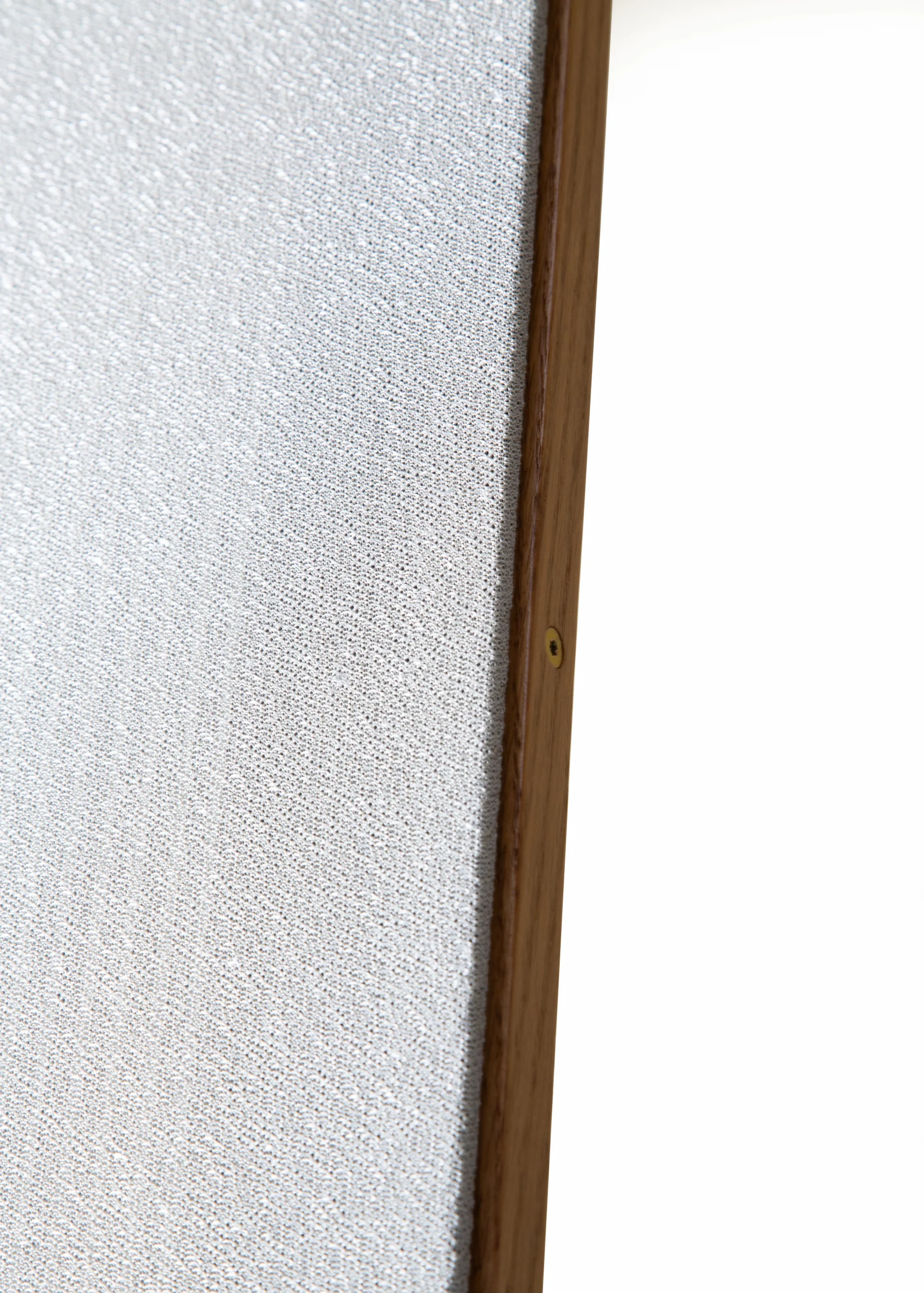
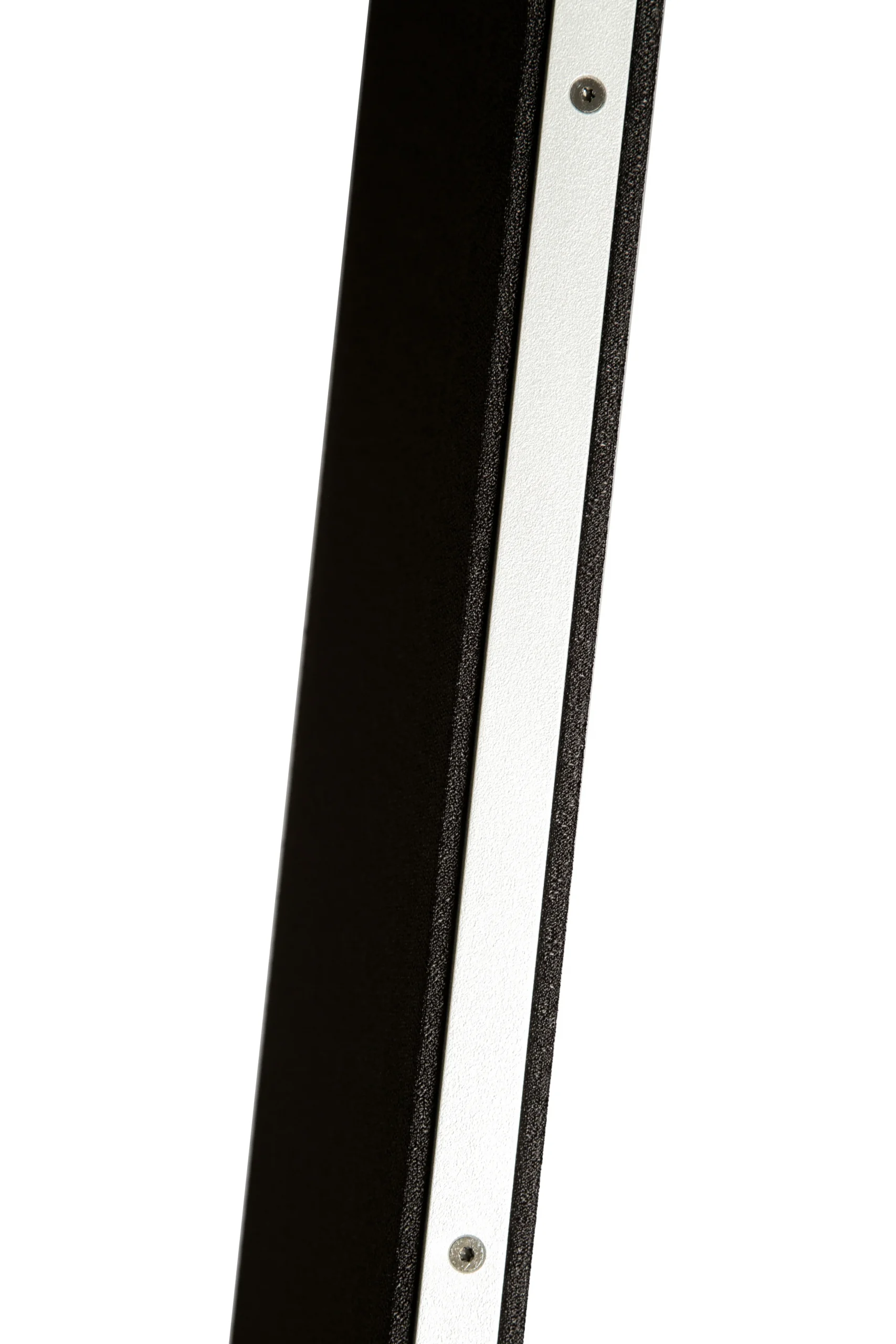
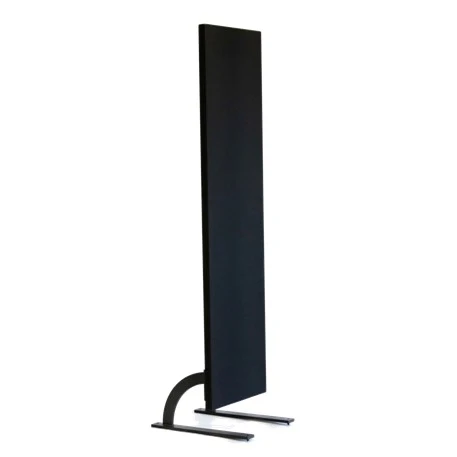
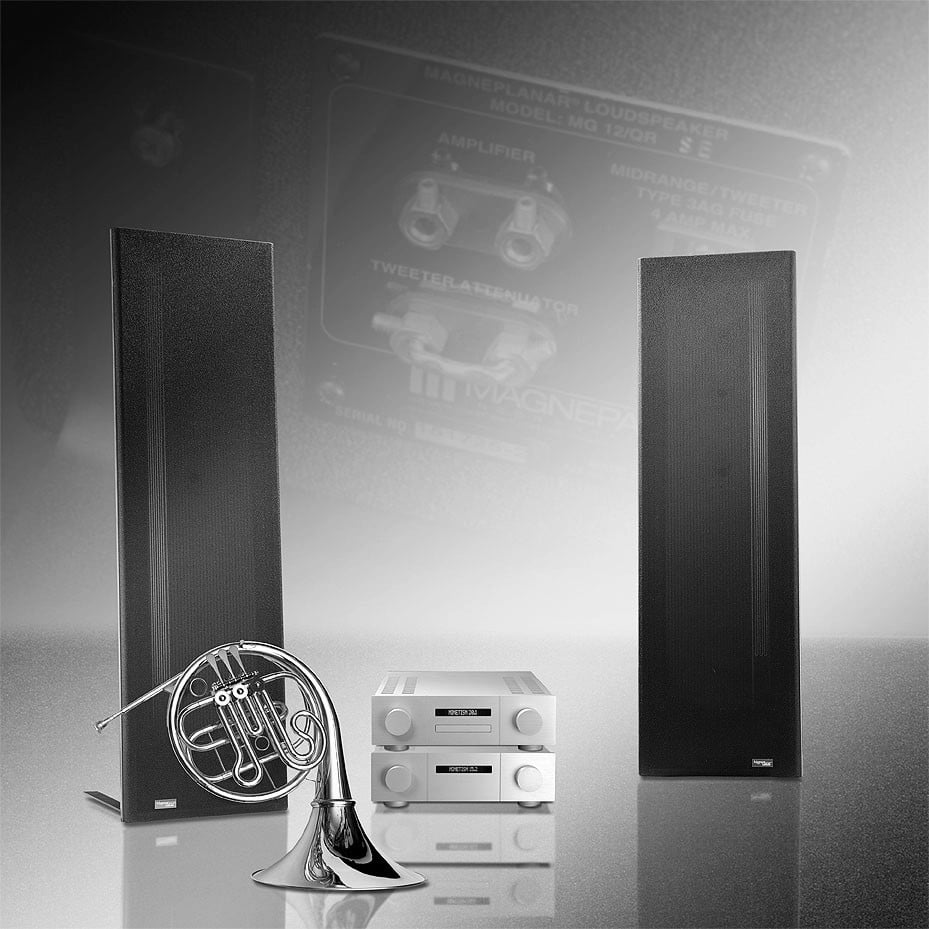
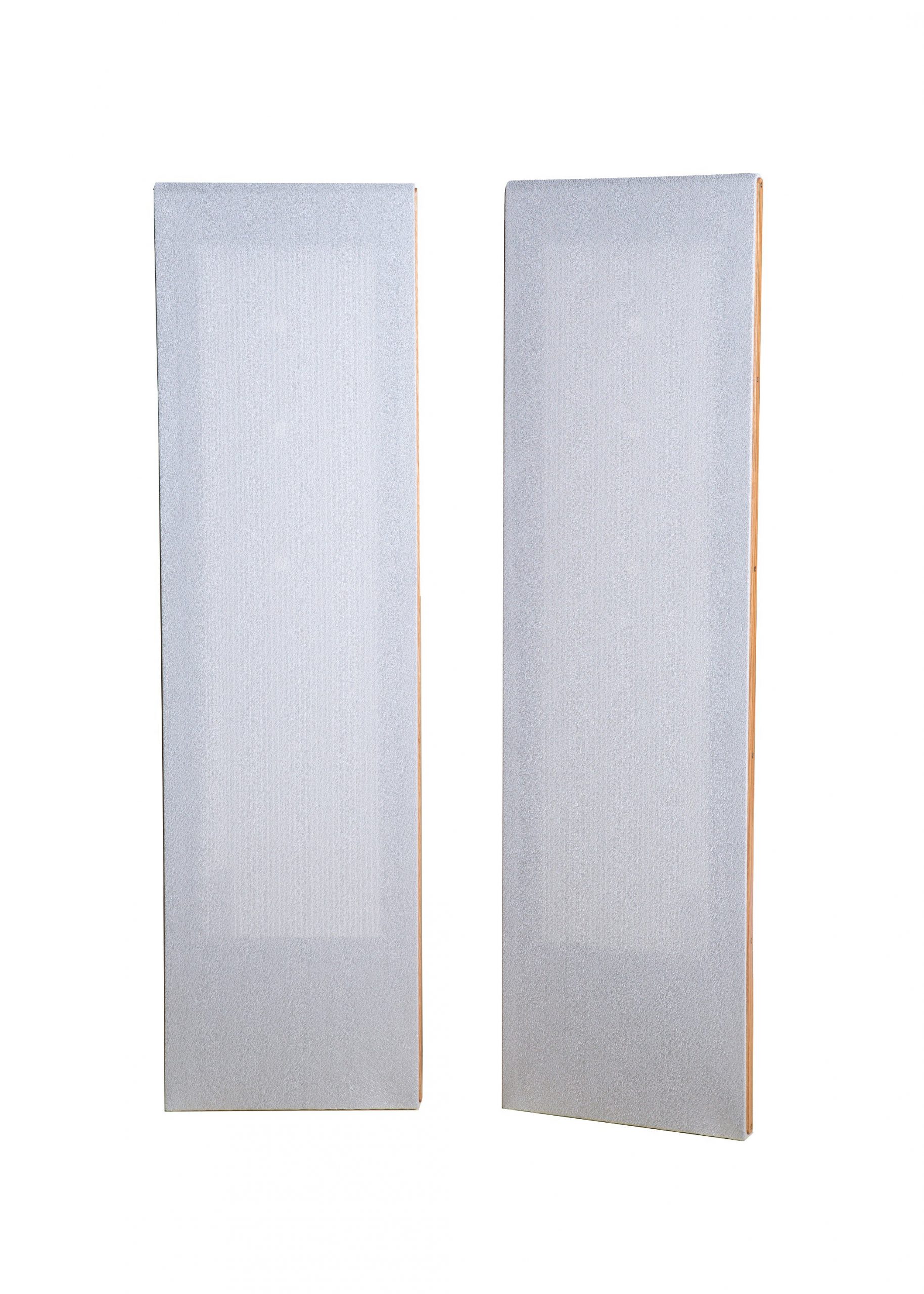
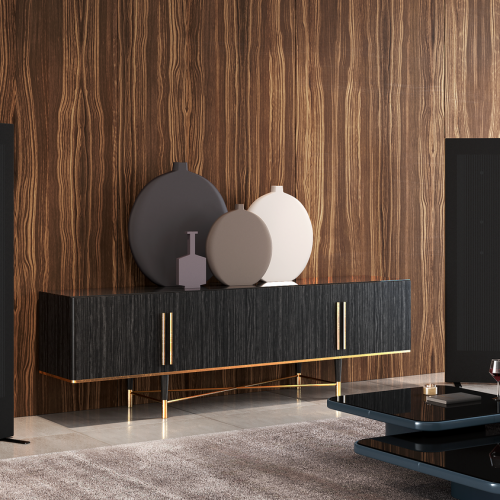
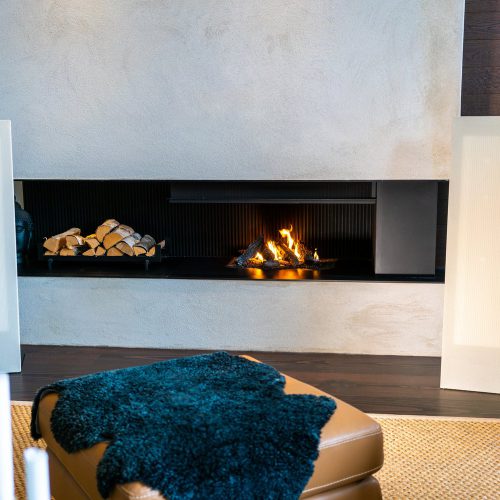


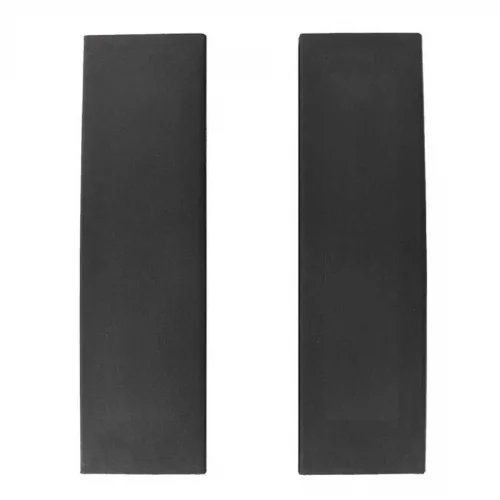
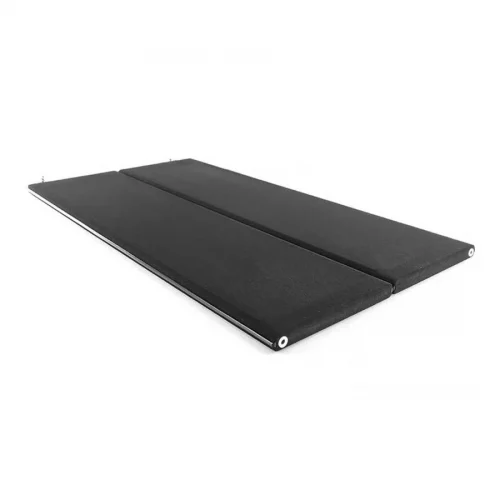
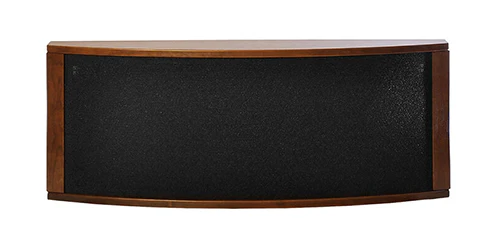
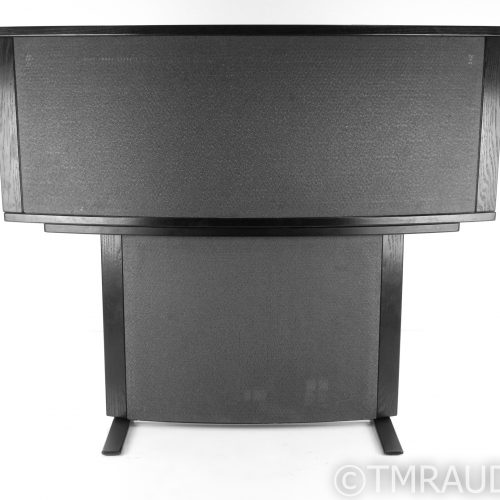

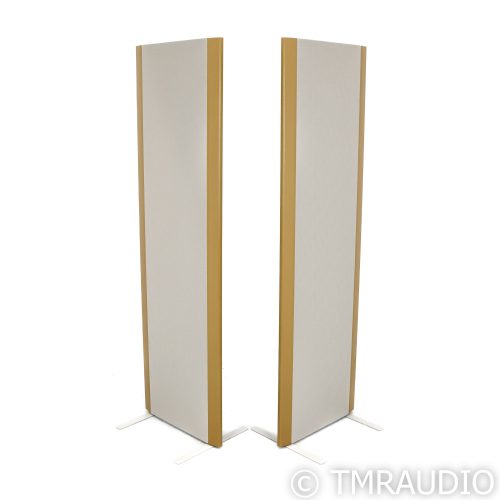
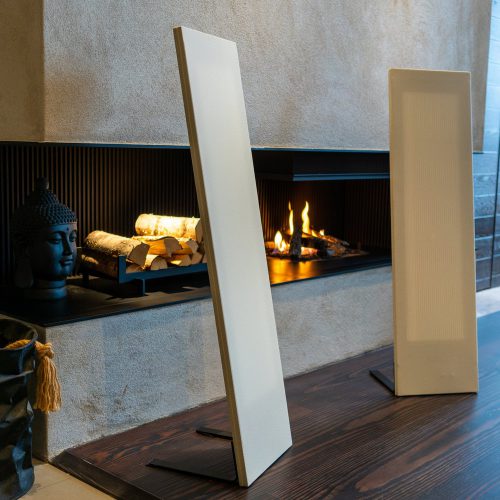
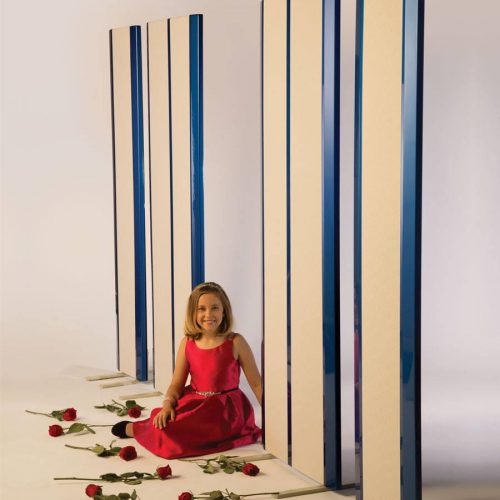
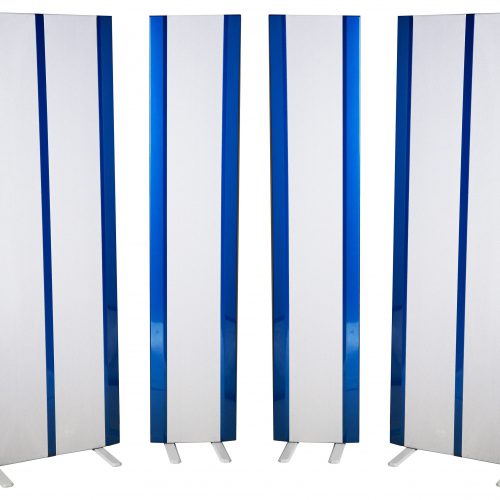
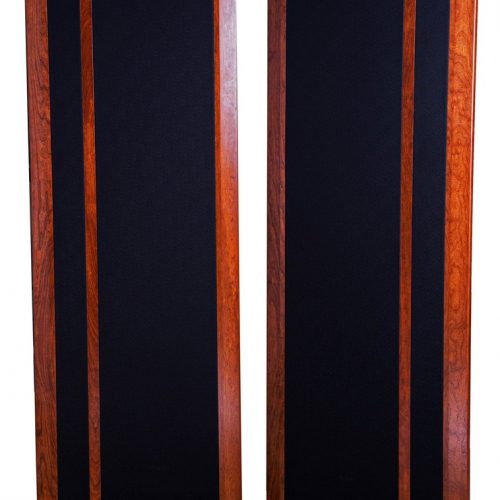
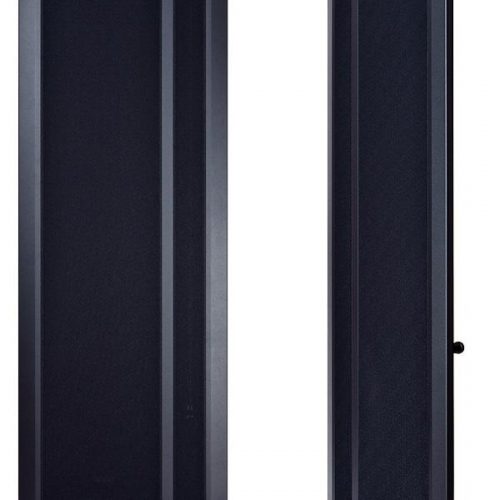
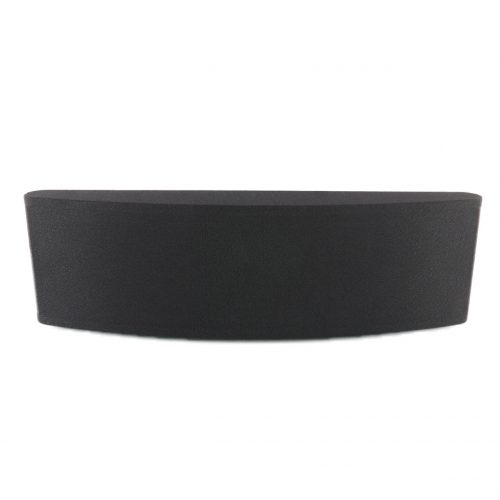
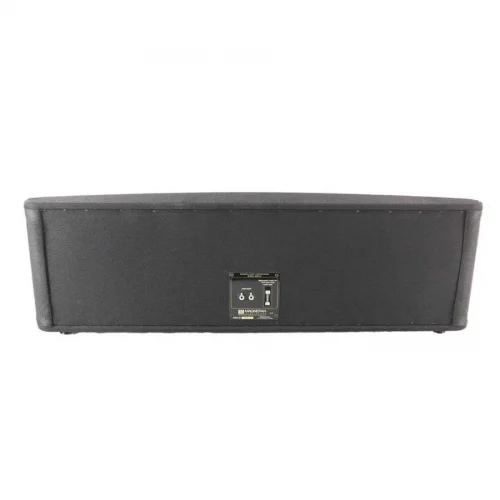
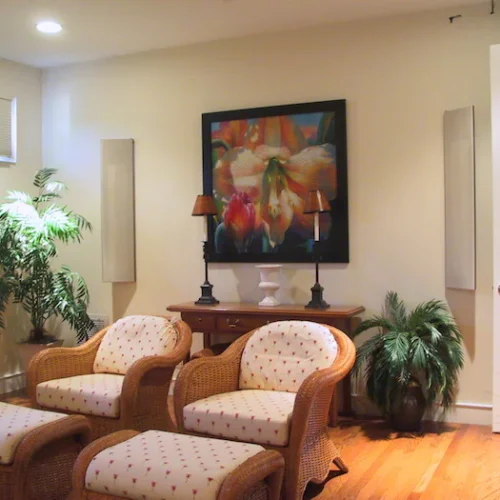
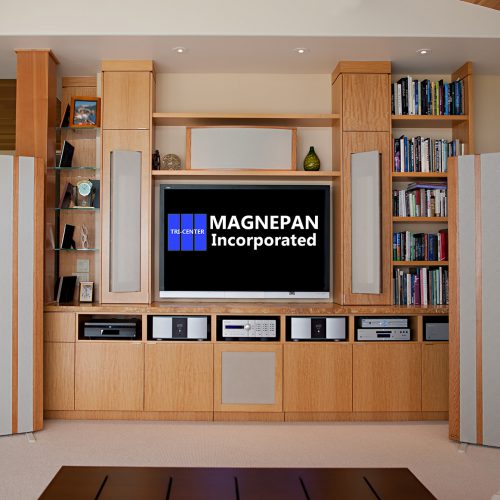


รีวิว
ยังไม่มีบทวิจารณ์